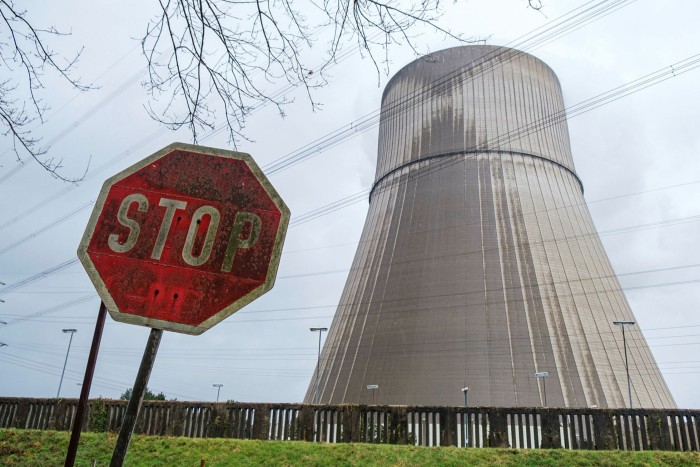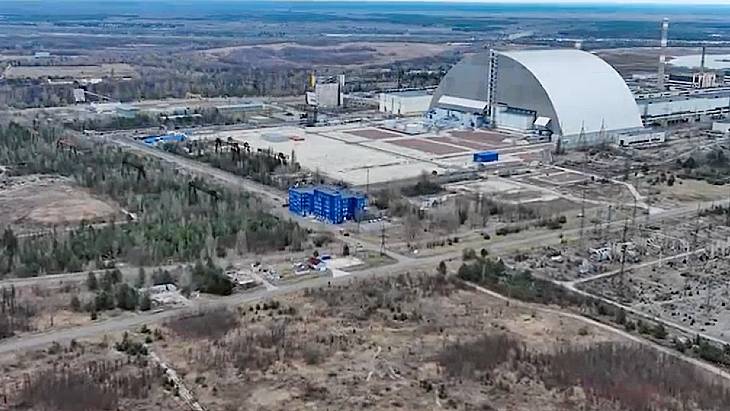by scceu

It sounded like a fair question. With sanctions against Russia likely to disrupt Germany’s energy supply, why, asked MP Marc Bernhard, couldn’t Berlin just restart its mothballed nuclear power stations?
“If we reactivate the three plants that were switched off last December they could, together with the three that are still operating, replace all the coal we import from Russia or 30 per cent of the Russian gas,” the Alternative for Germany MP told Olaf Scholz, Germany’s chancellor, in the Bundestag earlier this month.
Scholz gave him short shrift. “If the world were as simple as you make out in your question, we’d have a very good life,” he said.
Yet Bernhard is far from alone in raising the issue. Germany decided to phase out nuclear power after Japan’s Fukushima disaster in 2011 and the last reactors were due to be shut down at the end of this year. But with EU sanctions now being imposed on Russia’s coal, and some demanding an embargo on its oil and gas, there are growing calls to plug the resulting energy gap with nuclear power.
The government says it will not change its position. It cites technical reasons but the biggest argument could be political, especially for the Greens, who control the economy ministry.
“It would be suicide for the Greens to say we were wrong about nuclear power,” said Thomas O’Donnell, a Germany-based energy analyst and nuclear physicist. “So they’re forced to continue with the old battle plan.”
Attractive as the idea might appear to its advocates, ministers and analysts argue that the reality of a return to nuclear is more complicated.
Could a nuclear restart solve Germany’s looming energy crunch?
Germany’s high dependency on Russian gas is particularly great in heat generation and in industry. Yet nuclear power plays no role in either. The three plants that are still in operation — Isar 2, Emsland and Neckarwestheim 2 — don’t make much of a contribution to Germany’s energy balance: they have an installed capacity of just 4.3 gigawatts and supply on average about 30 terawatt hours a year of power — just 5 per cent of Germany’s total electricity production.
“There are some individual wind farms on the drawing board that have more than 4.3GW capacity,” said one official.
What are the legal difficulties of extending the plants’ lifespans?
Any decision to prolong their lives would require a new comprehensive risk assessment, and, according to the government, the risks associated with nuclear power have grown — witness the danger posed to critical infrastructure by cyber attacks.
The war in Ukraine, during which Russian forces fired on the Zaporizhzhia nuclear power station and the electricity supply to the inactive Chernobyl plant was interrupted, has also highlighted some of the external risks to which nuclear power is exposed.
Do the plants have fuel supplies?
The three existing plants have no fresh uranium fuel rods that would allow them to continue operating beyond year-end, the government says. New fuel assemblies would, it says, take 12-15 months to produce, and the earliest they would be ready is summer 2023. Russia is the second biggest uranium supplier to EU nuclear plants, according to Eurostat.
Scholz referred to the issue in his duel with Bernhard, the AfD MP. If the current reactors’ lives were extended “you need new nuclear fuel which just isn’t freely available”, the chancellor said, adding that nuclear reactors were not like cars that you just fill up when they run low on fuel.
Would the plants require a new operating licence?
The last time the final three nuclear plants underwent a safety inspection was in 2009, so a new one would have to be carried out which might trigger demands for “massive investments” in safety technology, the government said.

That would amount to a relicensing of the plants, a highly bureaucratic process: they would be required to meet the latest scientific and technological standards, which could end up being so demanding that they would make no business sense for potential operators.
What is the operators’ view on extending the plants’ lives?
The companies have made it clear they have no appetite to keep the plants going. Frank Mastiaux, chief executive of EnBW, which operates Neckarwestheim 2, told the Financial Times a life-extension beyond a few weeks “is not possible with the technical set-up we have today”, adding: “We have no legal framework whatsoever to run it one minute into the year 2023. It’s beyond our control.”
Eon, which operates Isar 2, takes a similar view. “There is no future for nuclear in Germany — period,” said chief executive Leo Birnbaum. “It is too emotional. There will be no change in legislation and opinion.”
The operators have also made clear that, if an energy emergency arose and the government forced them to restart the plants, they would insist it assumed all risks and costs. “They’re not prepared to encumber their shareholders with the disaster risks,” said one official. But that kind of blank cheque could prove impossible for any chancellor to take on.
“The problem is that the operators just don’t trust the government,” said O’Donnell. To restart plants they would need “political guarantees that nuclear will continue to be legal in Germany” and the policy would not be reversed again in future — a tall order for any government.
The arguments against may be persuasive but there are plenty of German politicians eager to offer voters relief from high energy prices who are continuing to plead for a nuclear reprieve.
“If the federal government says on the one hand that we soon won’t have any more energy and prices are exploding, then it should do everything in its power to curb [prices] and acquire energy,” Markus Söder, the powerful prime minister of Bavaria, said earlier this month. “Letting the nuclear power stations run for longer would at least contribute to that.”
 Drone footage of Chernobyl (Image: Chernobyl NPP)
Drone footage of Chernobyl (Image: Chernobyl NPP).jpg?ext=.jpg) OPG's Hartwick (L) and TVA's Lyash announced the partnership at the NEI in Washington, DC (Image: TVA)
OPG's Hartwick (L) and TVA's Lyash announced the partnership at the NEI in Washington, DC (Image: TVA).jpg?ext=.jpg) Artistic rendering of the Hermes low-power demonstration reactor (Image: Kairos Power)
Artistic rendering of the Hermes low-power demonstration reactor (Image: Kairos Power).jpg?ext=.jpg) (Image: IEA)
(Image: IEA)-new_730.jpg?ext=.jpg)



/https://www.thestar.com/content/dam/thestar/news/gta/2022/04/18/new-fossil-on-display-at-rom-predates-dinosaurs-and-was-discovered-in-ontario/embed_bug.jpg)
/https://www.thestar.com/content/dam/thestar/news/gta/2022/04/18/new-fossil-on-display-at-rom-predates-dinosaurs-and-was-discovered-in-ontario/embed_guys.jpg)
/https://www.thestar.com/content/dam/thestar/news/gta/2022/04/18/new-fossil-on-display-at-rom-predates-dinosaurs-and-was-discovered-in-ontario/embed_rom.jpg)


